Radiation contamination map in the event of a US nuclear strike on the territory of the Russian Federation
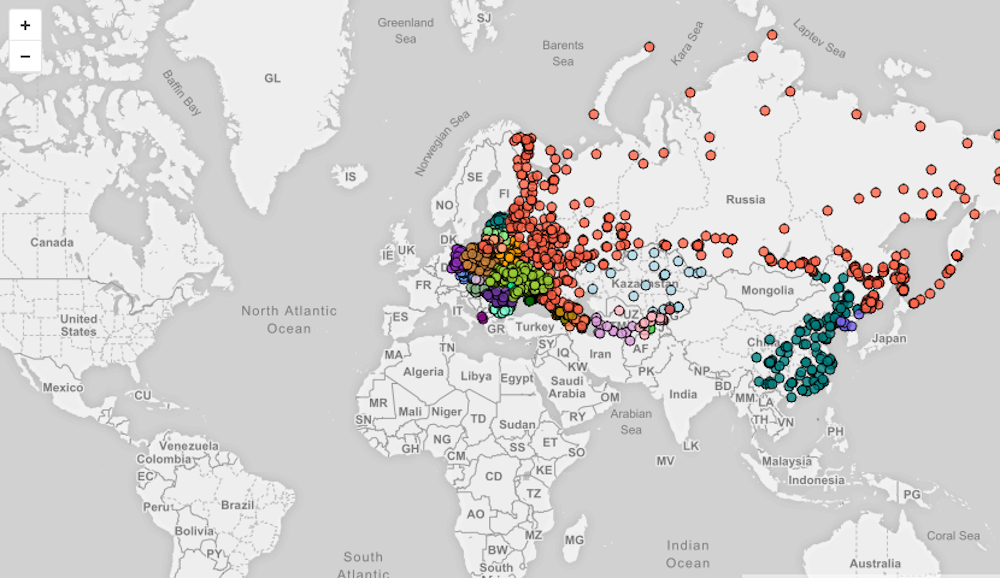
A few months ago, the archives of the US national security for the first time published the declassified list of priority targets of 1956 for a nuclear strike on the USSR and allied countries. The list of targets for “systematic destruction” includes the main cities and strategic sites of the Soviet Union, Eastern Europe, China and North Korea, a total of about 1,100 goals.
To date, the United States and the Russian Federation control 93% of the global arsenal of nuclear weapons . The list of priority goals probably hasn't changed too much. Unfortunately, nuclear bombing of Russian cities will have disastrous consequences not only for the Russian Federation, but also for the whole world.
Specialists from the non-profit research organization Future of Life Institute tried to most realistically calculate what the consequences of such a nuclear strike could be, depending on the power of the bombs (from 50 kilotons to 10 megatons) and the direction of the wind. The results of the calculations are presented on an interactive map . For example, they took the weather conditions for April 29, April 30 and May 1, 2016.
')
For example, here is the range of a 1.2 megaton bomb dropped on a Vnukovo strategic object: the radius of the fireball is 1.04 km, the radius of the shock wave (5 psi) is 7.47 km, the light radiation (3rd degree burns) is 13.2 km The projected 79,860 dead, 723,810 wounded.

Here is what a fallout map would look like if the 100-kiloton bombs dropped on April 29, 2016.
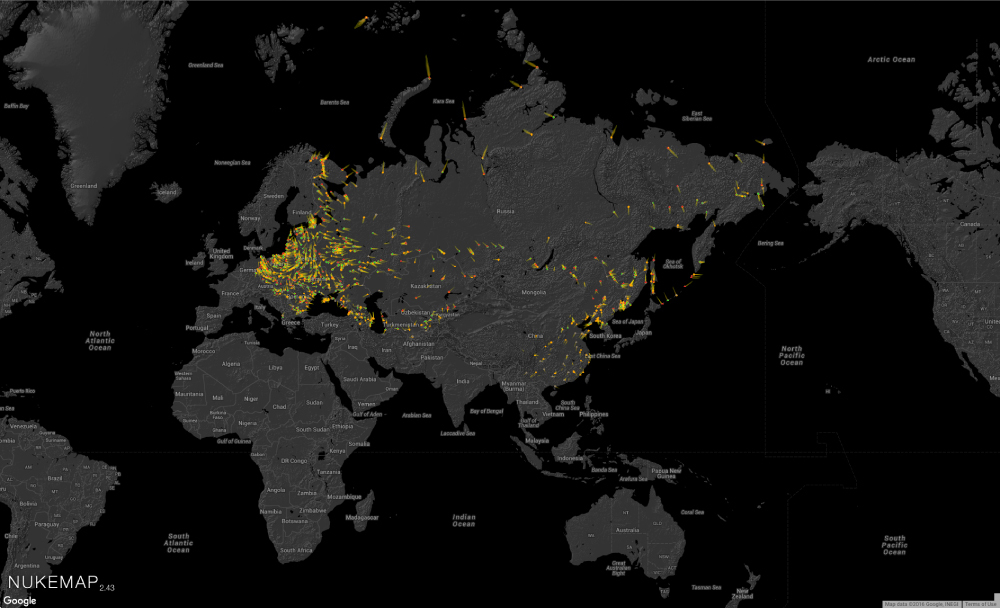
5-megaton bombs would lead to radiation contamination throughout the European part of Russia and Eastern Europe.
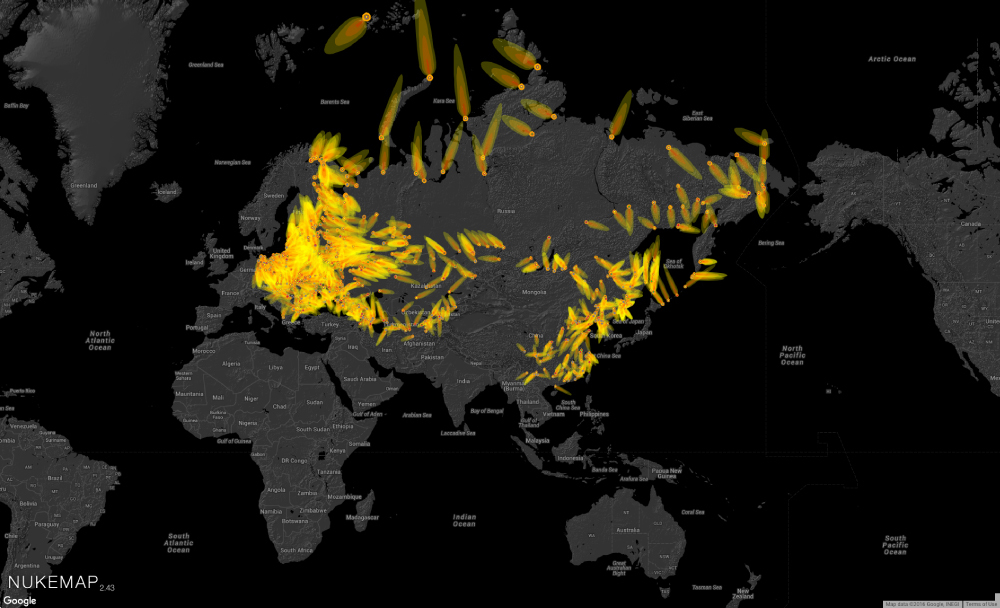
The map of radioactive contamination depends on the wind direction on a particular day. Below is a simulation based on real meteorological conditions on April 29, April 30 and May 1, 2016 (100 kiloton bombs).
April 29

April 30
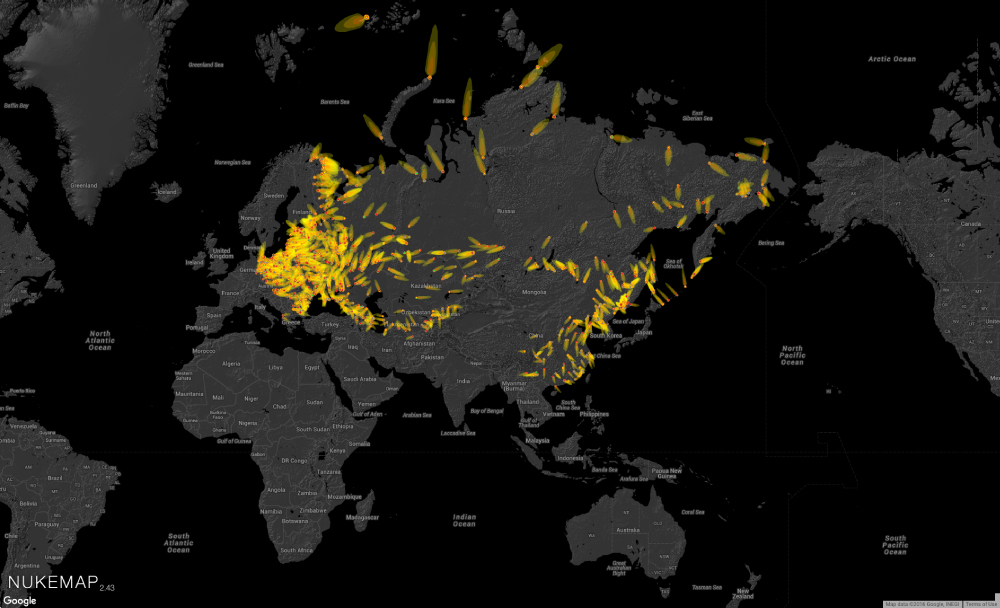
1st of May
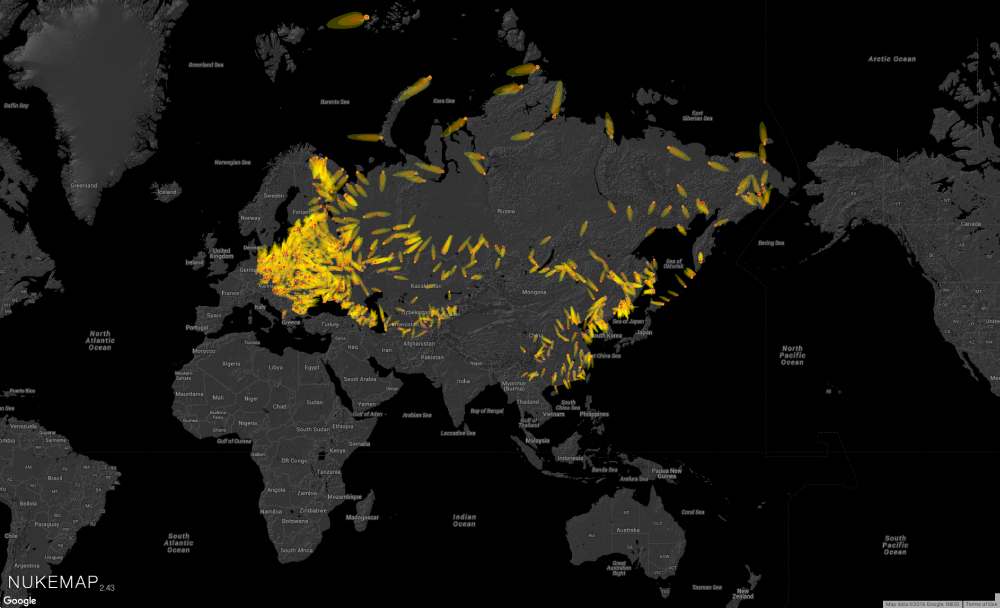
Currently, the United States has about 1,900 nuclear warheads on existing aircraft carriers and ballistic missiles that are ready to launch within 30 minutes. Thousands more warheads are in reserve and require more time to bring to combat readiness.
When conducting combat operations of this magnitude, the onset of a nuclear winter is inevitable with the destruction of most of the flora and fauna on the planet, experts say.
via motherboard
Source: https://habr.com/ru/post/393765/
All Articles